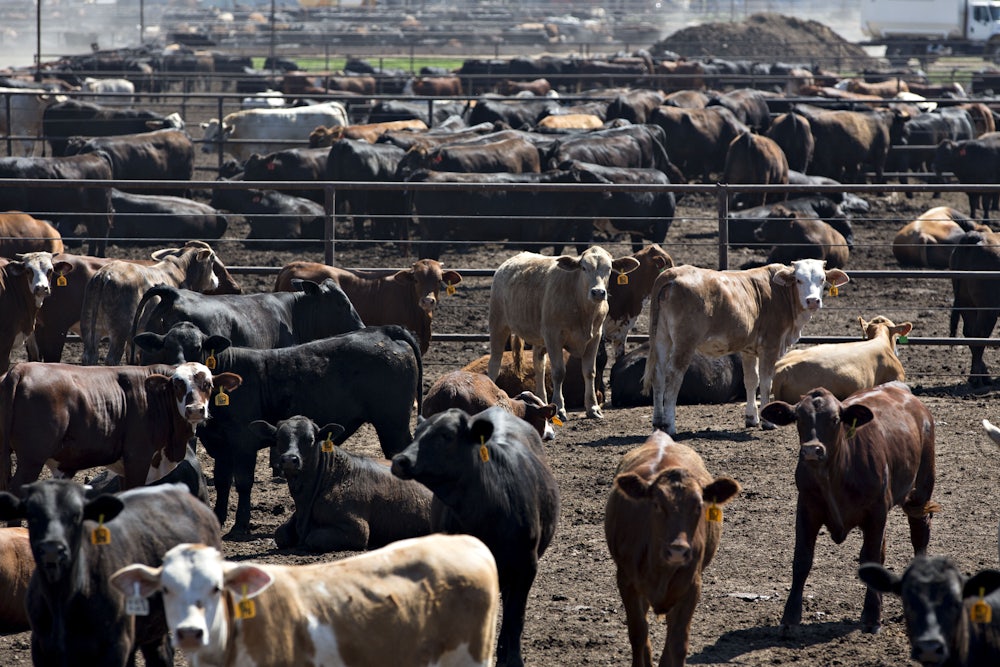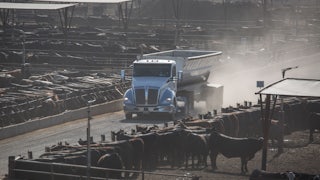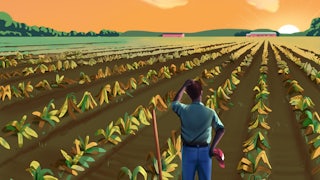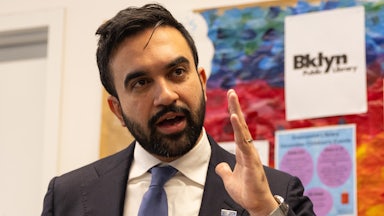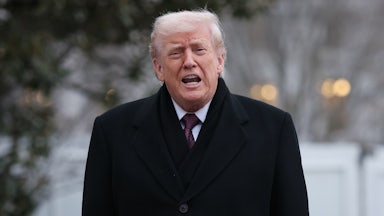In the fall of 2006, the United Nations released the first-ever large-scale investigation of animal agriculture’s effect on the climate. The 390-page report, titled “Livestock’s Long Shadow,” found that animal agriculture was “one of the largest sources of greenhouse gases and one of the leading causal factors in the loss of biodiversity.” The meat industry, which had previously faced little to no scrutiny for fueling the climate crisis, suddenly found itself having to deal with Paul McCartney citing the report to advocate for a vegetarian diet.
Initially, the industry attempted to solve its P.R. problem by pushing out press releases and fact sheets from suspiciously named front groups like the Center for Consumer Freedom and industry trade associations like the American Meat Institute. But as a new paper published this week makes clear, Big Meat swiftly turned instead to institutions the public was more likely to trust: universities.
The new paper, published in the peer-reviewed journal Climate, comes from University of Miami environmental science professor Jennifer Jacquet and Viveca Morris, executive director of the Law, Ethics and Animals Program at Yale Law School (I worked briefly at the latter as a college student). In the years following the U.N.’s report, they find, the animal agriculture industry responded by funding the work of industry-friendly academics, eventually bankrolling two of “the most prominent U.S. university centers engaged in shaping public understanding and public policy related to the livestock industry’s climate impacts.”
This is a page straight out of tobacco and fossil fuel companies’ playbooks: funding so-called “merchants of doubt” to distort public conversations away from solutions in line with scientific consensus. These efforts, Jacquet and Morris write, have “helped downplay livestock’s contributions to climate change, increase public trust that the industry is proactively reducing emissions on its own accord, and shape climate policymaking in the industry’s favor.”
The bulk of Jacquet and Morris’s study focuses on Frank Mitloehner, an animal scientist who has run one of these two centers—the Clarity and Leadership for Environmental Awareness and Research, or CLEAR, Center at University of California, Davis—since its launch in 2018. Mitloehner’s ties to Big Ag go back over a decade. In 2009, armed with over $26,000 from the Beef Checkoff program, a marketing and research group funded by beef producers, he co-published an article attacking the “Livestock’s Long Shadow” report’s claim that the U.S. livestock industry’s relative contribution to emissions was greater than the transportation sector’s. Technically, the article had a “point,” as one co-author of the U.N. report admitted in response to Mitloehner’s critique, since the U.N. report calculated livestock emissions by looking at their full “lifecycle,” which includes impacts from fertilizer production and land-use changes but didn’t do so for transportation. But Mitloehner’s article didn’t challenge the empirical evidence the report unearthed about the environmental damage of animal agriculture.
The media, however, told another story, portraying Mitloehner’s article as a thorough rebuttal of “Livestock’s Long Shadow.” One researcher, as Morris and Jacquet note in their paper, found that “universally, the story was reported as though the link between animal agriculture and greenhouse gas emissions had been disproven.” Industry publications crowned Mitloehner, who was not a climate scientist and had never contributed to a U.N. climate report, “the scientist who debunked Livestock’s Long Shadow” and “the scientist setting the record straight on cows and climate change.”
Over the next decade-plus, Mitloehner became a prominent evangelist for industry-friendly talking points, insisting that animal agriculture is not a major source of greenhouse emissions (it is), that reducing meat consumption “wouldn’t do much to save the planet” (it would), and that technological measures, such as anaerobic digesters and feed additives, are enough to mitigate livestock-induced warming (they aren’t). He became a go-to media “expert” on cattle emissions and a pugnacious livestock defender on Twitter, where he accumulated over 30,000 followers. He also had a direct influence on policy, advising the Obama White House and writing a non-peer-reviewed white paper that an industry group credited with keeping criteria related to reducing meat consumption out of federal dietary guidelines.
Throughout this period, Mitlehoener was receiving enormous sums of money from industry and industry-aligned groups. Reviewing his C.V., Jacquet and Morris found that he received a whopping $5,498,000 from these sources between 2002 and 2021, which represents just under half of his total reported funding during the period. And yet even that may be underestimating the true extent of the funding: His C.V., they write, “omits multiple industry funding sources noted elsewhere” and “does not disclose financial and professional ties to industry groups beyond his academic role.”
As he faced increased public scrutiny, Mitloehner dismissed allegations that this support compromised his research. In 2022, after The New York Times reported that the CLEAR Center had been set up with a $2.9 million gift from the Institute for Feed Education and Research, or IFeeder, the nonprofit wing of an industry group that represents a number of Big Ag corporations, Mitloehner scornfully described his critics as “people who delight in making the assumption that cooperating with members of a sector must spell dishonesty and a breach of ethics.” The CLEAR Center is “so much more than keyboard warriors shouting on social media,” he continued, “but we are all too often taken hostage by their attacks and their demands.”
When I contacted Mitloehner for comment this week about Jacquet and Morris’s paper, he called the paper “ideological” and said he hadn’t “fully read” it. “I’m proud of the work I do in the CLEAR Center that is helping to further methane mitigation in livestock,” he wrote via email. “I understand that some people want to see the livestock sector shrink or disappear, and they believe attacking me will further that cause, but my work and that of the CLEAR Center is moving the needle toward more sustainable food production. I would love to think we all want the same thing, food that nourishes a growing population with a smaller environmental footprint, but it’s clear some are threatened by that notion.” A U.C. Davis representative I contacted did not comment on Jacquet and Morris’s findings by publication time.
But as a number of journalists and researchers have already pointed out, the issue with Mitloehner isn’t necessarily his research. As the food and climate journalist Jenny Splitter wrote in 2022, “The problem has always been that CLEAR is not really a research lab. It’s mostly—or maybe entirely—a communications project.” A focus on P.R. was central to the group’s inception: The CLEAR Center’s anodyne name came courtesy of Charleston/Orwig (now C.O.nxt), a P.R. firm that worked to burnish Exxon’s image in the 1990s. A lack of focus on academic research, moreover, is clear from the group’s website, in which the “Research” tab links only to Mitloehner’s personal ResearchGate profile. The site also links directly to Mitloehner’s personal blog, which includes such gems as, “The bogus burger blame” and “When did beef become a four-letter word?”
This approach was by design: Jacquet and Morris quote from IFeeder documents praising Mitloehner as a “a neutral, credible, third-party voice to news reporters and stakeholder groups at conferences and other important governmental meetings,” whose voice would help consumers “feel good about the choice they are making to include protein in their families’ diets.” The CLEAR Center was created, the documents say, to work “with decision makers, thought leaders and consumer influencers.”
This is one distinction between Big Ag’s approach and that of Big Tobacco or Big Oil, Jacquet told me. Whereas fossil fuel and tobacco companies prioritized funding academics whose studies came to industry-friendly solutions, Jacquet said, Big Ag companies are much more focused on promoting university-affiliated voices who will directly intervene in “public discourse, advocacy, and lobbying efforts.” The actual research, in this approach, isn’t the main point.
Though the majority of the study focuses on Mitloehner, it also zeroes in on one of his former students, Kimberly Stackhouse‐Lawson. Stackhouse-Lawson was hired in 2020 to run an initiative at Colorado State University called AgNext, which became, thanks to significant industry funding, “one of the largest university centers in the country focused on climate change and animal agriculture,” according to Jacquet and Morris. Stackhouse-Lawson, who had just six first-authored academic bylines to her name when she was made a full professor, had previously been employed by the National Cattlemen’s Beef Association, where she, in her own words, worked “closely with communications professionals to promote beef’s image and defend beef’s freedom to operate to enhance consumer, influencer and stakeholder trust in beef.” She then went on to work for the U.S. subsidiary of JBS, the world’s biggest meat producer, averring that her “primary career objective is to expand the role of animal protein in global diets.” Her day-to-day work at AgNext—forming industry partnerships, testifying to Congress, and appearing in JBS-sponsored content in The Wall Street Journal and Politico—was “not so different than what it was at JBS,” she told Meatingplace, an industry publication. While I contacted Stackhouse-Lawson and Colorado State University representatives to ask about Jacquet and Morris’s paper, neither provided comment before publication.
These two academics’ careers alone would be a shocking indictment of Big Ag’s influence over academia. But when I wrote to Jacquet to ask how big of a problem industry funding really is, she responded that Mitloehner and Stackhouse-Lawson reflect a broader trend. “This is the tip of the iceberg in terms of animal ag influence at universities because we were only looking at two universities and the topic of climate change,” she wrote. “Once you broaden out to issues like other environmental impacts, nutrition/health, it gets incomprehensibly large.”
Jacquet and Morris are “on a treasure trove,” Austin Frerick, an antitrust and agriculture expert at Yale told me. The new paper barely scratches the surface of the meat industry’s influence in academia, he said. “There’s so much more there.”
